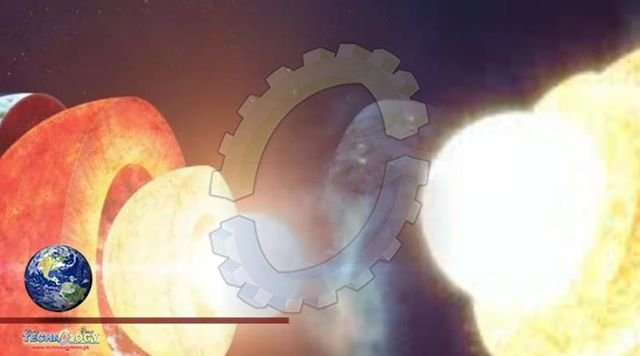Scientists have discovered evidence that the Earth’s inner core oscillates, contradicting previously held beliefs that it consistently rotates at a faster rate than the planet’s surface. Scientists identify a six-year cycle of super- and sub-rotation that affected the length of a day based on their analysis of seismic data.

Earth’s structure is divided into layers, with the inner core at the center followed by the outer core, lower mantle, upper mantle, crust, and atmosphere. The inner core is the hottest part of the planet at about 10,000 °F (5400 °C), which is similar to the temperature of the surface of the sun! Believed to consist mostly of an iron-nickel alloy, the inner core is mainly a solid ball with a radius of about 760 miles (1,220 km). It rotates slightly faster than the planet as a while, which is called super-rotation.
University of Southern California (USC) scientists have found evidence that the Earth’s inner core oscillates, contradicting previously accepted models that suggested it consistently rotates at a faster rate than the planet’s surface. Their study, published today (June 10, 2022) in the journal Science Advances, shows that the inner core changed direction in the six-year period from 1969-74, according to the analysis of seismic data. The scientists say their model of inner core movement also explains the variation in the length of a day, which has been shown to oscillate persistently for the past several decades.
“From our findings, we can see the Earth’s surface shifts compared to its inner core, as people have asserted for 20 years,” said John E. Vidale, co-author of the study and Dean’s Professor of Earth Sciences at USC Dornsife College of Letters, Arts and Sciences. “However, our latest observations show that the inner core spun slightly slower from 1969-71 and then moved the other direction from 1971-74. We also note that the length of a day grew and shrank as would be predicted.
Our understanding of the inner core has expanded dramatically in the past 30 years. The inner core — a hot, dense ball of solid iron the size of Pluto — has been shown to move and/or change over decades. It’s also impossible to observe directly, meaning researchers struggle through indirect measurements to explain the pattern, speed and cause of the movement and changes.Research published in 1996 was the first to propose that the inner core rotates faster than the rest of the planet — also known as super-rotation — at roughly 1 degree per year. Subsequent findings from Vidale reinforced the idea that the inner core super-rotates, albeit at a slower rate.
Utilizing data from the Large Aperture Seismic Array (LASA), a U.S. Air Force facility in Montana, researcher Wei Wang and Vidale found the inner core rotated slower than previously predicted, approximately 0.1 degrees per year. The study analyzed waves generated from Soviet underground nuclear bomb tests from 1971-74 in the Arctic archipelago Novaya Zemlya using a novel beamforming technique developed by Vidale.
The new findings emerged when Wang and Vidale applied the same methodology to a pair of earlier atomic tests beneath Amchitka Island at the tip of the Alaskan archipelago Milrow in 1969 and Cannikin in 1971. Measuring the compressional waves resulting from the nuclear explosions, they discovered the inner core had reversed direction, sub-rotating at least a tenth of a degree per year. The idea the inner core oscillates was a model that was out there, but the community has been split on whether it was viable,” Vidale says. “We went into this expecting to see the same rotation direction and rate in the earlier pair of atomic tests, but instead we saw the opposite. We were quite surprised to find that it was moving in the other direction.”
Source: This news is originally published by scitechdaily